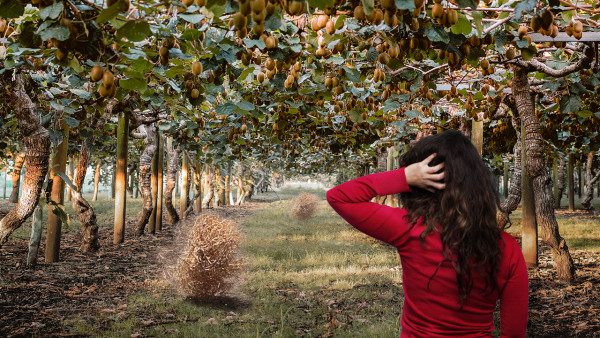Where are the workers?
4 March 2021

The apple harvest is underway, the kiwifruit harvest is starting, and winter pruning is approaching.
Before we know it, Spring will be here and we will be harvesting asparagus, strawberries and new season’s vegetables. This will be quickly followed by cherries and other summerfruit.
Seasonal workers are needed for harvest and pruning because these are jobs that only last for a few months. Having enough seasonal workers is vital for good quality produce, high returns, horticulture’s continued growth, and increasing the number of New Zealanders employed in permanent positions.
When insufficient seasonal workers are available, the complete reverse is true: less crop is harvested and quality is down because harvest cannot be done at the optimum time. This results in lower returns and rural economies suffering, putting the permanent employment of New Zealanders under threat. Some growers may go out of business in what is a vicious downwards cycle.
New Zealanders are nearly half horticulture’s seasonal workforce. About a third are workers from the Pacific through the Recognised Seasonal Employer (RSE) temporary immigration scheme (the workers return home after the season). The rest are backpackers getting their overseas experience. The problem horticulture is facing this season is there are far fewer RSE workers and hardly any backpackers.
Depending on how many additional New Zealanders can be attracted to horticulture, we are short across all our crops (including wine grapes) by between 5,000 and 10,000 workers. This has been our industry’s consistent message to the Government and media since the middle of last year. We predicted the problem and have been working with the Government to find solutions to it. That is why the Government authorised the movement of 2,000 RSE workers from the Pacific, starting in mid-January this year.
This decision is a great help and we are appreciative but unfortunately, it is not enough. In the meantime, programmes to attract New Zealanders through pay, accommodation, meals and transport have been running. However, horticulture will still be short of seasonal workers and the impact on businesses and communities will be felt economically for the rest of this year and longer.
We are an innovative and solution focused industry. We have developed and continue to develop ways through which to meet the seasonal labour shortage. Many of these solutions are medium to long term, such as the use of technology to automate harvests. None of them, apart from increasing the movement of workers from the Pacific, will alleviate today and next season’s requirement for more seasonal workers.
We also have the issue of workers who have been stranded here for some time. They need to be repatriated home.
We believe our industry’s collaborative view is the best option, today and for the coming season. We need to be able to return to the pre-Covid flow of Pacific seasonal workers, both ways. This can be achieved through the creation of a Pacific workers’ bubble, where the workers and the villages they come from are vaccinated.
On arrival in New Zealand, these workers would remain in their bubble for the first few weeks. Similarly, when these workers return home, they would go back into their bubble for a few weeks. This solution is predicated on a health-based risk analysis, linked to the fact that the Pacific is Covid-free and the fact that New Zealand’s Covid controls have kept most of the country free from community transmission.
The reality that New Zealand faces is that as well as the health response, the country urgently needs an economic response, built on the back of a comprehensive vaccine programme. Further lockdowns and border restrictions will only make New Zealand’s economic recovery harder, and will most likely result in horticulture operations going out of business.
This is our plea. Let’s now plan for New Zealand’s economic revival through strategic use of the vaccine. For our growers, the Government must enable the movement of seasonal workers in vaccine protected bubbles from Covid-free Pacific countries.
Mike Chapman
Chief Executive
